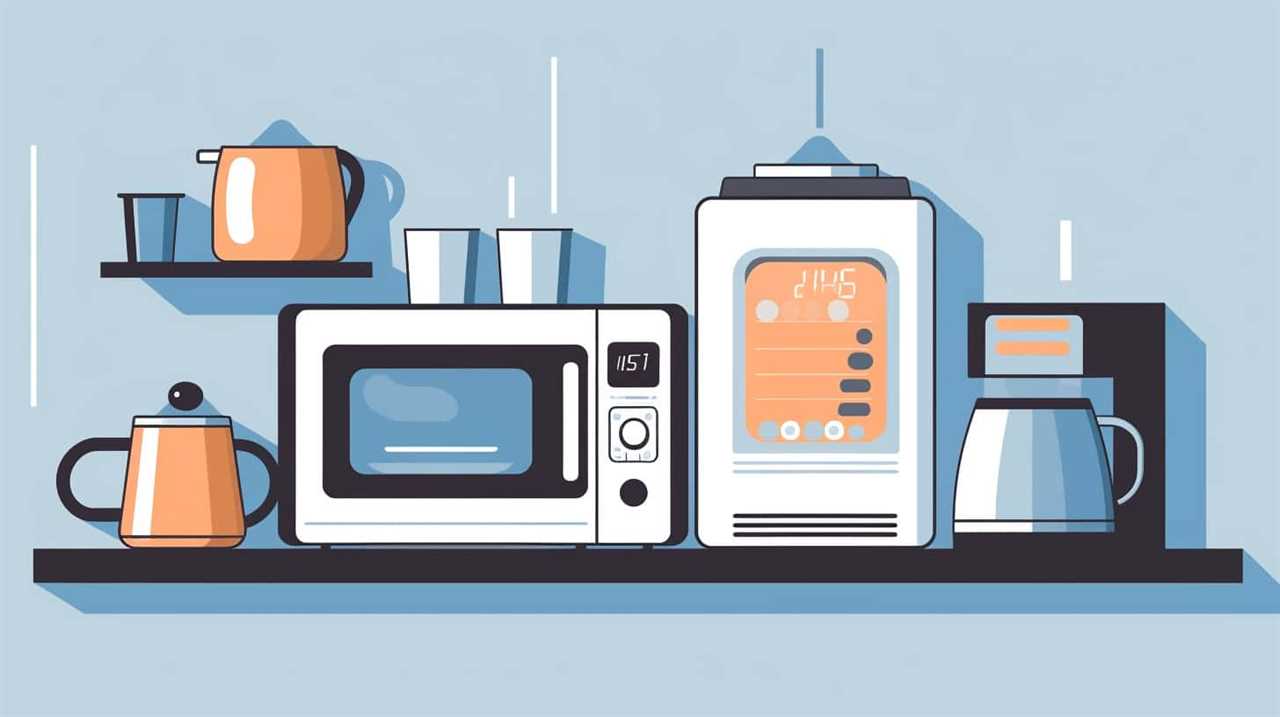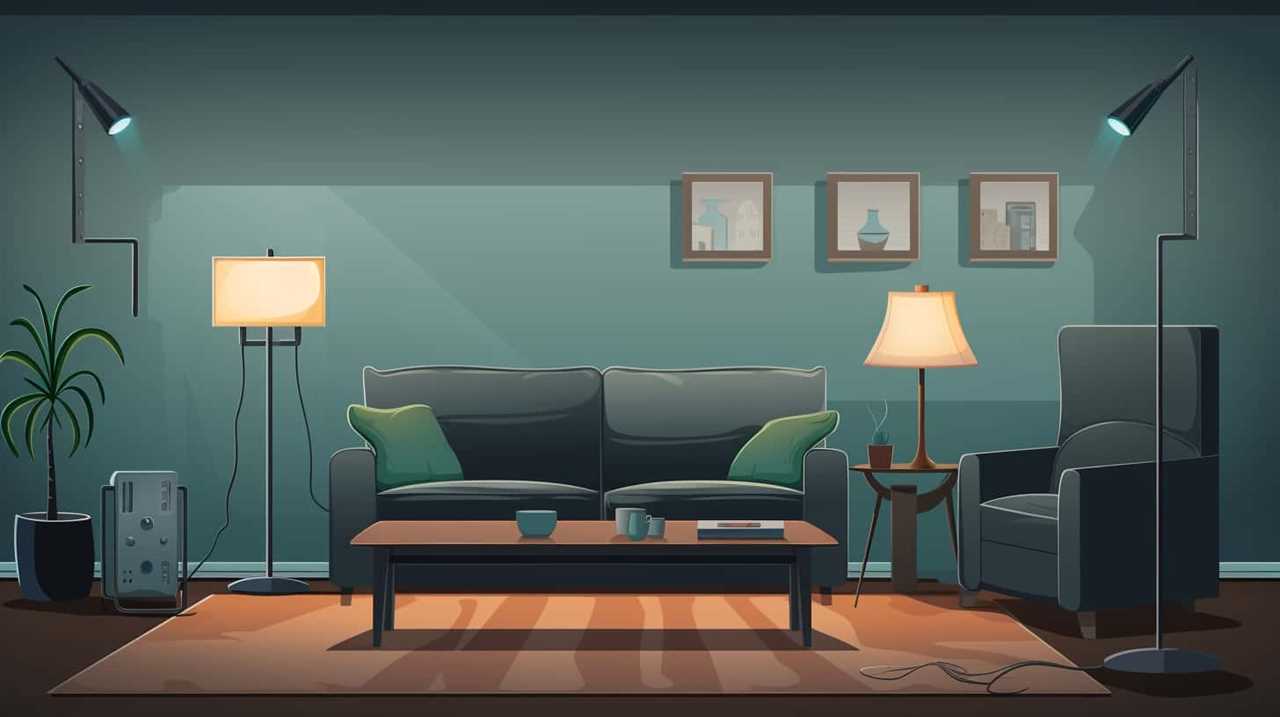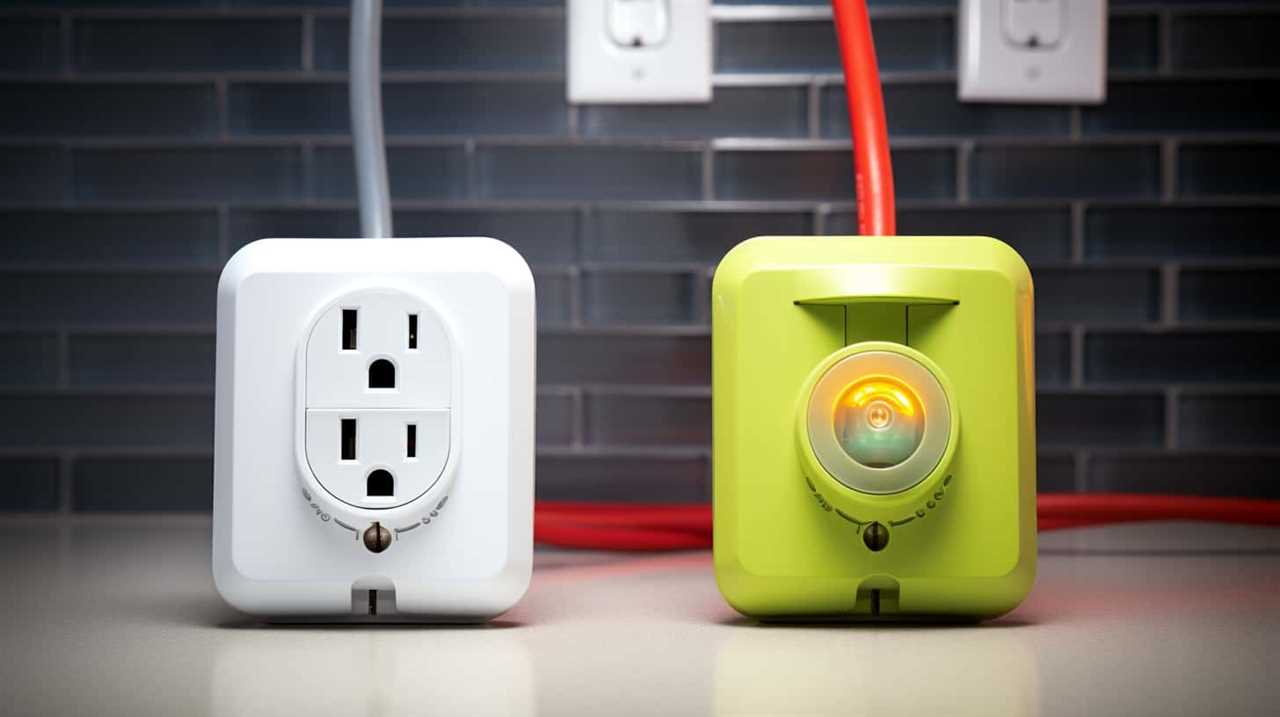Are appliances typically included when purchasing a home?
This article explores the common misconceptions surrounding this question and provides an objective analysis of the factors that influence whether appliances are included.
We will delve into the concept of ‘fixtures’ in real estate and differentiate between real and personal property.
By understanding the impact of local customs and market conditions, buyers and sellers can make informed decisions regarding appliance inclusion.

Additionally, we will discuss the potential value of including common appliances in a home sale.
Key Takeaways
- Common misconceptions about included appliances
- Legal implications of fixtures and removing fixtures before sale
- Factors that influence appliance inclusion in home sales
- Options for buyers if appliances are not included
Common Misconceptions About Included Appliances
One common misconception about included appliances in a home sale is that they’re always in perfect working condition. It’s important for homebuyers to understand that while appliances may be included in the sale, there’s no guarantee that they’ll be in pristine condition.
This misconception can lead to misunderstandings and potential disputes between buyers and sellers. To avoid such situations, it’s crucial for both parties to have a clear understanding of appliance ownership and condition prior to finalizing the sale.
Buyers should carefully examine the appliances during the home inspection and request any necessary repairs or replacements before closing. Sellers, on the other hand, should provide accurate information about the age, condition, and functionality of the appliances to avoid any future disputes.
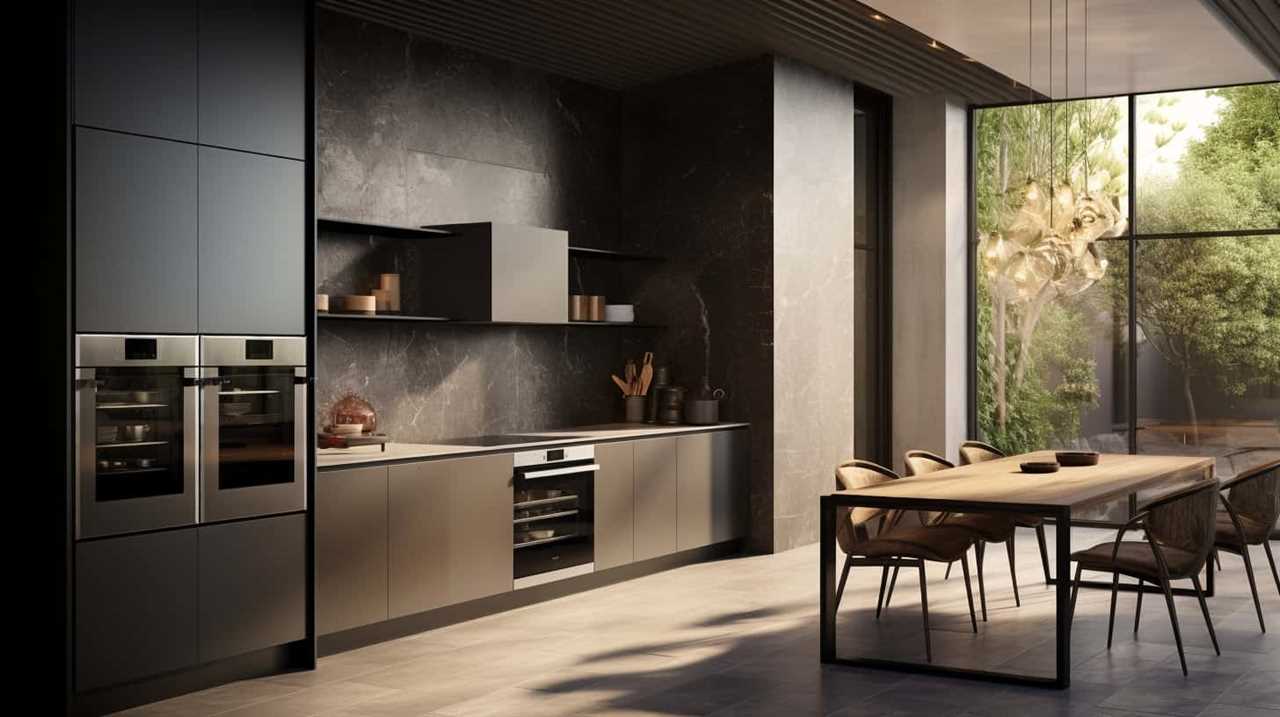
Understanding the Concept of "Fixtures" in Real Estate
When it comes to buying or selling a home, it’s important to understand the concept of ‘fixtures’ in real estate. Fixtures refer to items that are permanently attached to the property and are considered part of the home. This can include appliances, such as built-in ovens or refrigerators.
Understanding the legal implications of fixtures is crucial, as it determines what stays with the home and what can be removed before the sale.
Appliance as Fixtures
We include appliances as fixtures in our home sales. Understanding fixture classification is crucial in real estate transactions. Here are three important points to consider:
- Attachment: A fixture is typically an item that’s permanently attached to the property, such as built-in appliances or lighting fixtures. These items are considered part of the property and are included in the sale unless otherwise specified.
- Intent: The intention of the buyer and seller also plays a role in fixture classification. If the buyer expects certain appliances to be included in the sale, it should be explicitly stated in the contract.
- Implications of removing fixtures: Removing fixtures that are included in the sale may have legal consequences. It’s important to understand the implications and potential disputes that can arise from removing fixtures without consent.
Legal Implications of Fixtures
In our experience, understanding the concept of fixtures in real estate is crucial due to its legal implications.

Fixtures are items that were once personal property but have become permanently attached to a property, making them part of the real estate.
Common disputes arise when buyers and sellers disagree on whether certain items should be considered fixtures and included in the sale. This can lead to legal consequences, such as lawsuits and delays in closing the deal.
To avoid such disputes, it’s important for both parties to clearly define what’s included in the sale, either through a written agreement or by specifying it in the listing. Seeking legal advice and conducting thorough inspections can also help mitigate any potential conflicts.
Understanding the legal implications of fixtures is essential for a smooth and successful real estate transaction.

Removing Fixtures Before Sale?
Discussing the removal of fixtures before a home sale involves understanding the concept of ‘fixtures’ in real estate. Fixtures are items that are permanently attached to a property and are considered part of it.
When it comes to removing fixtures before a sale, there are a few important considerations to keep in mind:
- Ownership: Before removing any fixtures, it’s crucial to determine who owns them. Generally, fixtures are considered part of the property and are included in the sale. However, there may be exceptions, such as if the fixtures were explicitly excluded in the purchase agreement.
- Agreement: If you wish to remove fixtures, it’s essential to have a clear agreement with the buyer. This may involve negotiating a separate price or making arrangements for replacement items.
- Legality: It’s important to understand the legal implications of removing fixtures. Some fixtures may have legal requirements for removal, such as obtaining permits or following specific procedures.
When considering removing fixtures before a home sale, it’s advisable to consult with a real estate professional or legal expert to ensure compliance with local laws and regulations.
Determining What Is Considered a Fixture
When it comes to determining what’s considered a fixture in a home sale, it’s important to understand the distinction between fixtures and personal property.

Fixtures are items that are permanently attached to the property and are typically included in the sale, while personal property refers to movable items that aren’t included unless specifically negotiated.
This distinction has implications for both buyers and sellers, as it can affect the overall value of the property and potential disputes during the transaction.
It’s crucial for all parties involved to have clear and written agreements regarding the inclusion or exclusion of fixtures to avoid any misunderstandings or conflicts.
Defining Fixture Vs. Personal Property
We commonly encounter the question of what’s considered a fixture and what’s personal property in home sales. Defining fixtures versus personal property can sometimes be a complex task, but it’s essential to determine what stays with the property and what can be taken by the seller.

Here are three guidelines to help distinguish between fixtures and personal property:
- Attachment: Fixtures are typically items that are permanently attached to the property, such as built-in appliances or light fixtures. Personal property, on the other hand, can be easily removed without causing damage.
- Adaptability: If an item is customized or specially designed for the property, it’s more likely to be considered a fixture. Personal property, however, is often easily replaceable or interchangeable.
- Intent: The intention of the parties involved plays a crucial role in determining whether an item is a fixture or personal property. If the item was intended to be a permanent part of the property, it’s more likely to be classified as a fixture.
Implications for Buyer/Seller
To understand the implications for buyers and sellers in determining what’s considered a fixture, let’s delve into the factors that influence this determination.
When it comes to understanding the legalities surrounding fixtures in a home sale, both buyers and sellers need to be aware of the potential implications for financing.
A fixture is generally considered to be any item that’s permanently attached to the property, such as built-in appliances or light fixtures. These fixtures are typically included in the sale of the home unless otherwise specified.

However, if a buyer is relying on financing to purchase the property, the presence of certain fixtures may affect the appraisal and loan approval process. Lenders often require that certain fixtures be present in the home to ensure its value and marketability.
Therefore, it’s crucial for both buyers and sellers to have a clear understanding of what’s considered a fixture and the potential implications it may have on the financing of the transaction.
Importance of Written Agreements
Our understanding of what’s considered a fixture can be greatly clarified and solidified through the use of written agreements. When it comes to the sale of a home, having clear communication and legal obligations outlined in a written agreement is crucial. Here are three reasons why written agreements are important in determining what’s considered a fixture:
- Avoid Misunderstandings: Written agreements provide a clear record of what’s included in the sale of a home. This helps prevent any misunderstandings or disputes between the buyer and seller regarding whether certain appliances or fixtures are included.
- Legal Protection: A written agreement ensures that both parties are aware of their legal obligations. It establishes a legally binding contract that can be enforced if any issues arise.
- Documentation: Having a written agreement serves as important documentation in case of any future disagreements or legal proceedings. It provides a record of the agreed-upon terms and can be used as evidence if needed.
Differentiating Between Real Property and Personal Property
When determining if appliances are included in a home sale, it is important to differentiate between real property and personal property. Real property refers to land and anything permanently attached to it, while personal property includes items that are moveable and not permanently affixed to the land. To better understand this distinction, let’s take a look at the following table:

| Real Property | Personal Property |
|---|---|
| Land and buildings | Appliances |
| Fixtures | Furniture |
| Trees and vegetation | Electronics |
This table illustrates the classification of items typically considered real property and personal property. It is crucial to make this distinction because it has tax implications. Personal property is subject to different tax rules compared to real property. Understanding the classification can help buyers and sellers navigate the process and avoid any misunderstandings. Now that we have clarified the difference between real property and personal property, let’s explore the factors that influence whether appliances are included in a home sale.
Factors That Influence Whether Appliances Are Included
One important factor that influences whether appliances are included in a home sale is the seller’s personal preference. While some sellers may choose to include appliances as part of the sale, others may decide to take them with them to their new home. Here are three factors that can influence the seller’s decision:
- Common Misconceptions: Sellers may have misconceptions about the value of their appliances or believe that buyers prefer to choose their own appliances. This can lead them to exclude appliances from the sale.
- Appliance Ownership: If the appliances are owned outright by the seller, they’ve the freedom to include or exclude them from the sale. However, if the appliances are leased or financed, there may be restrictions on transferring ownership.
- Negotiation: Buyers can negotiate with the seller to include appliances in the sale. This negotiation can be influenced by factors such as the market conditions, the seller’s motivation, and the buyer’s needs and preferences.
Understanding these factors can help buyers and sellers navigate the process of including or excluding appliances in a home sale.
The Role of the Listing Agreement in Appliance Inclusion
When it comes to determining whether appliances are included in a home sale, the listing agreement plays a crucial role. The terms outlined in the listing agreement will provide clarity on whether appliances are part of the sale or not.

These terms serve as guidelines for both the seller and the buyer, helping them understand what to expect in terms of appliance inclusion.
Listing Agreement Terms
Our listing agreement clearly outlines the terms for appliance inclusion in the home sale. It’s important to understand these terms before negotiating with potential buyers.
Here are three key aspects of the listing agreement that pertain to appliance inclusion:
- Negotiating terms: The listing agreement allows the seller to specify whether appliances are included in the sale or if they’ll be removed before closing. This provides an opportunity for the seller to negotiate with potential buyers on the inclusion of appliances.
- Market conditions: The listing agreement takes into account the current market conditions when determining the inclusion of appliances. In a buyer’s market, including appliances can make the property more attractive and increase the chances of a successful sale.
- Clarifying expectations: The listing agreement ensures that both the seller and the buyer have a clear understanding of what appliances are included in the sale. This helps to avoid any misunderstandings or disputes during the transaction process.
Appliance Inclusion Guidelines
To ensure a smooth transaction, it’s essential to follow the appliance inclusion guidelines outlined in the listing agreement. These guidelines provide clarity on what appliances are included in the sale of a home and help prevent misunderstandings between the buyer and seller.

When negotiating terms, it’s important for both parties to discuss which appliances will be included in the sale and to document this in the listing agreement. This document serves as a binding contract that outlines the agreed-upon terms, ensuring that both the buyer and seller are aware of what appliances will be transferred with the property.
Additionally, appliance warranties should also be considered during the negotiation process. Sellers should disclose any existing warranties on the appliances to the buyer, allowing them to make an informed decision.
Negotiating Appliance Inclusions?
By adhering to the guidelines outlined in the listing agreement, we can effectively negotiate the inclusion of appliances in the sale of a home.
When it comes to negotiating the price for appliances, there are a few key considerations to keep in mind:
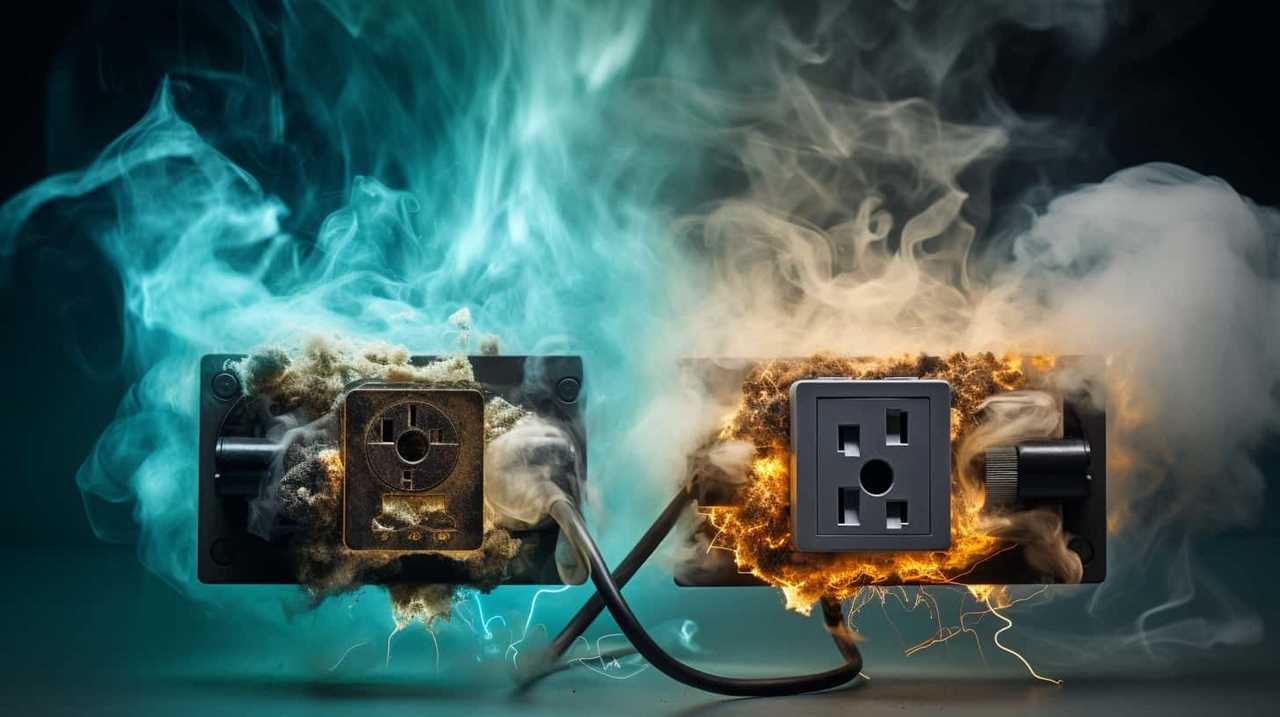
- Determine the value: Assess the value of the appliances and factor it into the overall price negotiation. Consider the age, condition, and brand of the appliances to determine a fair price.
- Explore alternative options: If the seller is unwilling to include the appliances in the sale, explore alternative options. For example, you could negotiate a lower price for the home and then purchase the appliances separately.
- Get it in writing: Once an agreement has been reached, make sure to include the specifics in writing, such as which appliances are included, their condition, and any warranties or guarantees.
Negotiating Appliance Inclusion in the Purchase Agreement
We negotiated the inclusion of appliances in our purchase agreement. When negotiating terms with the seller, it is important to clearly outline the responsibilities regarding the inclusion of appliances. To facilitate the negotiation process, we created a table to clearly define the appliances we wanted included, the condition they should be in, and the seller’s responsibility in terms of maintenance and repairs.
| Appliance | Condition | Seller’s Responsibility |
|---|---|---|
| Refrigerator | Excellent | Maintenance and repairs |
| Dishwasher | Working | Maintenance and repairs |
| Stove/Oven | Good | Maintenance and repairs |
The Importance of Written Agreements in Appliance Inclusion
When it comes to including appliances in a home sale, written agreements play a crucial role. They ensure clear ownership and help avoid misunderstandings and disputes down the line.
Without a written agreement, it becomes difficult to determine which appliances are included in the sale and who’s responsible for any repairs or replacements. Therefore, it’s essential to have a written agreement that clearly states the appliances being included in the sale.
Clear Appliance Ownership
To ensure clarity and avoid disputes, it’s essential to establish clear ownership of appliances through written agreements when including them in a home sale. Here are three reasons why written agreements are important in determining appliance ownership:

- Negotiating Terms: A written agreement allows both the buyer and seller to negotiate and agree upon the inclusion or exclusion of specific appliances. This ensures that both parties are on the same page regarding which appliances will be transferred with the sale of the property.
- Appliance Warranties: Some appliances may still be covered under warranty at the time of the home sale. A written agreement can specify whether these warranties will be transferred to the buyer or remain with the seller. This prevents any confusion or disputes regarding warranty coverage.
- Evidence of Ownership: By documenting appliance ownership in a written agreement, both parties have a clear record of which appliances are included in the sale. This provides evidence in case of any misunderstandings or disputes that may arise later.
Establishing clear ownership through written agreements is crucial in avoiding misunderstandings and disputes when it comes to including appliances in a home sale.
Avoiding Misunderstandings and Disputes
Using written agreements is crucial in avoiding misunderstandings and disputes when including appliances in a home sale. These agreements serve as a clear record of what appliances are included in the sale, preventing any confusion or disagreements between the buyer and seller.
Negotiation strategies can be employed during the creation of these agreements to ensure both parties are satisfied. It’s important to discuss the inclusion of appliances early in the negotiation process to avoid any last-minute disputes.
Additionally, these agreements have legal implications and can protect both the buyer and seller in case of any disputes. By clearly outlining the appliances included in the sale and having both parties sign the agreement, the chances of misunderstandings and disputes are significantly reduced, providing a smoother transaction for all involved.

Legal Considerations for Both Buyers and Sellers
As buyers and sellers, we need to be aware of the legal considerations regarding the inclusion of appliances in a home sale. Understanding our legal obligations is essential to avoid potential risks and liabilities. Here are three important factors to consider:
- Written agreements: It’s crucial to have a clear and detailed written agreement that explicitly states whether appliances are included in the sale. This document should outline the specific appliances, their condition, and any warranties or guarantees.
- Disclosure requirements: Sellers must disclose any known defects or issues with the appliances. Buyers should thoroughly inspect the appliances and request any necessary repairs or replacements before finalizing the sale.
- Appraisal and valuation: The inclusion or exclusion of appliances can impact the appraisal and valuation of the property. Buyers and sellers should consult with professionals to accurately assess the value of the appliances and understand their impact on the overall sale price.
Options for Buyers if Appliances Are Not Included
If appliances are not included in the home sale, we have a few options available to us as buyers. One common misconception is that the seller will always include appliances in the sale. However, this is not always the case, and it’s important for buyers to be aware of their options.
One option is to negotiate with the seller to include the appliances in the sale. This can be done by offering a higher purchase price or by requesting a separate agreement for the appliances. Another option is to ask the seller to remove the appliances and provide a credit towards the purchase price. Lastly, buyers can also consider purchasing their own appliances separately after the sale.
To help you understand these options better, here is a table summarizing the common misconceptions and negotiating strategies when appliances are not included in the home sale:

| Common Misconceptions | Negotiating Strategies |
|---|---|
| Appliances are always included | Negotiate to include appliances in the sale |
| Appliances are never included | Request a credit towards the purchase price |
| Sellers will replace appliances | Purchase appliances separately after the sale |
The Impact of Local Customs and Market Conditions
In our experience, local customs and market conditions greatly influence whether appliances are included in a home sale. Here are three key ways in which these factors impact the inclusion of appliances:
- Regional Preferences: Different areas may have specific customs regarding what’s considered standard when it comes to appliances. For example, in some regions, it’s customary for sellers to include certain appliances, such as refrigerators or stoves, while in others, buyers may expect these items to be negotiated separately.
- Competitive Market: In a seller’s market where demand is high, sellers may have the upper hand and choose not to include appliances in the sale, as buyers are more likely to be flexible in their expectations. Conversely, in a buyer’s market, sellers may include appliances to attract more potential buyers.
- Economic Factors: Market conditions, such as the overall economic climate and housing market trends, can also influence whether appliances are included. During times of economic downturn, sellers may be more willing to include appliances to sweeten the deal and make their property stand out.
Considering these factors, it’s crucial for both buyers and sellers to be aware of local customs and market conditions when determining whether to include appliances in a home sale.
Now, let’s delve into the potential value of including appliances in a sale.
The Potential Value of Including Appliances in a Sale
Now let’s explore the benefits of including appliances in a home sale.

Including appliances in a sale can offer several advantages for both the buyer and the seller.
For buyers, having appliances included can save them time and money, as they won’t have to worry about purchasing new appliances and having them installed. It also provides a sense of convenience and immediate functionality to the property.
Sellers, on the other hand, can use the inclusion of appliances as a negotiating tool to attract potential buyers and potentially increase the sale price. Additionally, including appliances in the sale can make the property more attractive compared to other listings in the market.
Therefore, carefully considering appliance inclusion benefits and negotiating their inclusion can be advantageous for both parties involved in a home sale.

Common Appliances Included in Home Sales
Including appliances in a home sale offers several advantages for both the buyer and seller, including the convenience of immediate functionality and the potential to attract more potential buyers and increase the sale price.
When it comes to common appliances included in home sales, there are a few items that are typically expected to be part of the deal:
- Kitchen appliances: This usually includes the refrigerator, stove, oven, and dishwasher. These appliances are considered essential in a kitchen and are commonly included in the sale.
- Washer and dryer: Many buyers expect the convenience of having a washer and dryer included in the sale. These appliances are commonly found in laundry rooms and can save buyers the hassle of purchasing and installing them separately.
- HVAC system: While not technically an appliance, the heating, ventilation, and air conditioning (HVAC) system is a crucial component of a home. Buyers often expect the HVAC system to be included in the sale, as it affects the comfort and livability of the property.
It’s important to note that the inclusion of appliances in a home sale can have legal implications. Sellers should clearly specify which appliances are included in the sale to avoid any misunderstandings or disputes.
Tips for Buyers and Sellers Regarding Appliance Inclusion
As buyers and sellers navigate the inclusion of appliances in a home sale, it is important to consider a few helpful tips. In order to ensure a smooth transaction and avoid any misunderstandings, both parties should engage in open and clear communication regarding the appliances. Below is a table that outlines some key tips for buyers and sellers regarding appliance inclusion:

| For Buyers | For Sellers |
|---|---|
| – Make a list of desired appliances | – Determine which appliances will be included |
| – Research the market value of appliances | – Specify the appliances in the listing |
| – Negotiate appliance inclusion | – Consider offering appliance warranties |
| – Inspect appliances before closing | – Provide appliance warranties, if agreed |
| – Understand appliance warranties | – Clarify any concerns or questions |
Frequently Asked Questions
Are There Any Legal Consequences for Not Including Appliances in a Home Sale?
Legal consequences may arise if appliances are not included in a home sale. Negotiation strategies can help avoid disputes. It is important to consult with legal professionals and review contracts to ensure compliance with local laws.
How Can Buyers Negotiate for the Inclusion of Appliances in the Purchase Agreement?
When negotiating terms of a home purchase, buyers can discuss the inclusion of appliances in the purchase agreement. Offering incentives, such as a higher purchase price or agreeing to cover closing costs, may increase the chances of appliances being included.
What Are Some Common Appliances That Are Typically Included in Home Sales?
Appliances play a vital role in home sales, affecting both buyer and seller. When valuing appliances, factors like age, condition, and brand should be considered. Common appliances typically included in home sales are refrigerators, stoves, dishwashers, and washers/dryers.
Can Sellers Remove Appliances That Were Initially Included in the Listing Agreement?
Sellers have the right to remove appliances initially included in the listing agreement, but it may not align with the buyer’s expectations. It’s important for sellers to communicate any changes to avoid potential conflicts.
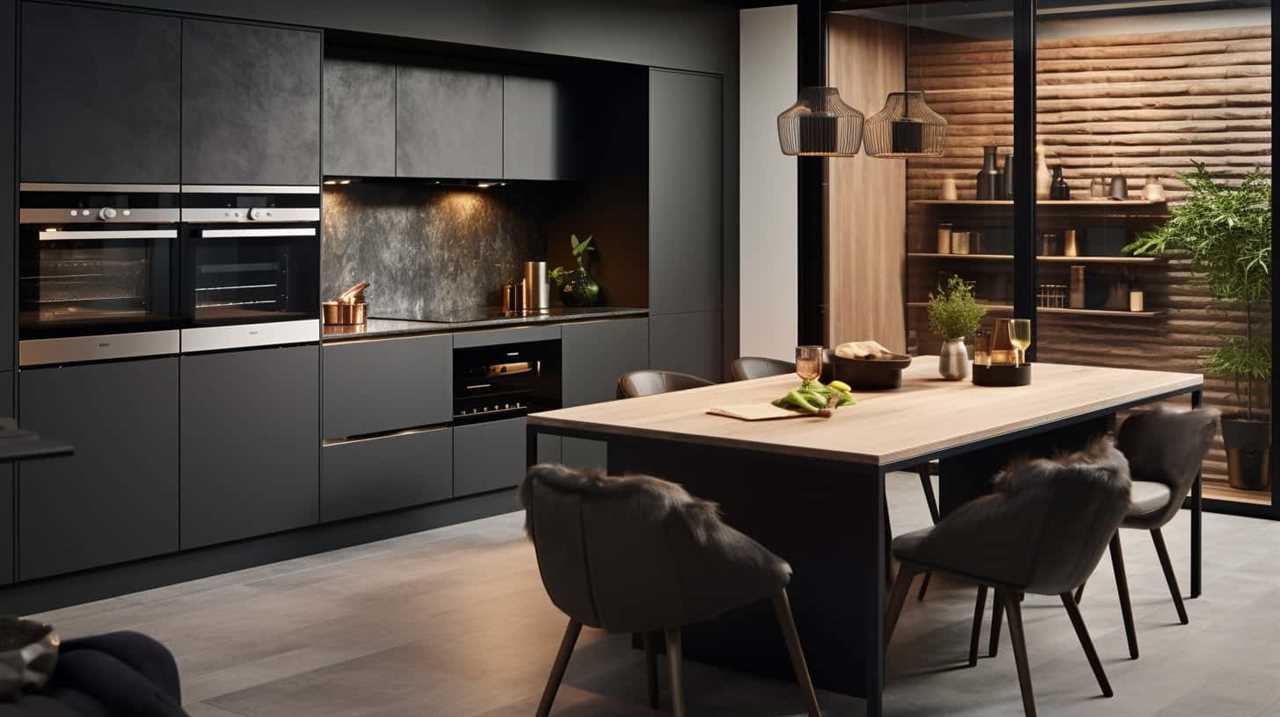
How Do Local Customs and Market Conditions Affect Whether Appliances Are Included in a Home Sale?
Local cultural expectations and market conditions play a significant role in determining whether appliances are included in a home sale. These factors can impact the home sale price and should be considered when negotiating the terms of the agreement.
Conclusion
In conclusion, when it comes to home sales, the inclusion of appliances can vary based on factors such as local customs and market conditions. Understanding the concept of fixtures in real estate is crucial in determining what’s considered included in the sale.
While some may argue that including appliances can add value to a property, it ultimately depends on the preferences of buyers and sellers.
Remember, in the world of real estate, the inclusion of appliances can be as unpredictable as a storm on a sunny day.
